Note: Be sure to review all resources and preview all artists before determining if they are appropriate to share with your students.
People find mysteries intriguing. Nancy Drew, Eleven and Vecna, Scooby Doo, the Scranton Strangler, and the Loch Ness Monster are all examples of mysteries that span time zones and pique people’s interests in all walks of life. We love mysteries so much that about a quarter of top-ranked podcasts are about true crime, according to a Pew Research Center study from this past June. Because mysteries invite curiosity and questions, they are a natural fit for the art room to foster inquiry skills. For inquiry practice, or just to hook your students with a shocking artwork, share one of the artworks below. Each artwork has a mysterious, murky past with multiple angles and points of view. Just keep in mind, the mystique might get the best of you—you’ll send yourself home with homework to solve the mysteries!
Here are four artworks with hazy pasts, unique points of view, and unidentifiable stories that are sure to amaze your students.

1. Girl and Heart Balloon by Banksy
In 2020 Shoreditch, London, a monochromatic girl reaching for her heart-shaped balloon was spray painted with stencils onto a bleak concrete wall. The balloon floats away from the child as she tries to grasp it. This graphic quickly became one of Banksy’s most recognizable graffiti images. Two mysteries arise with this work of art: the context of the artwork and Banksy’s true identity.
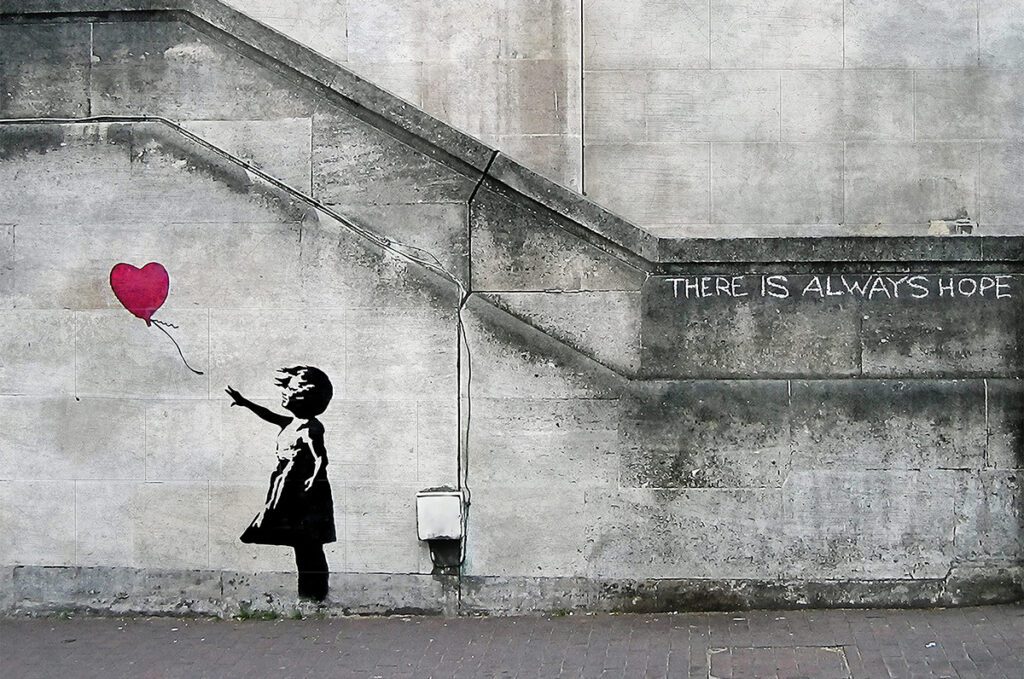
Mystery 1: The Artwork Debacle
There is a debate about whether the girl let go of the balloon or if she’s trying to catch the helium-filled heart. Usually, balloons reference childhood, naivety, and freedom. Ask your students what they think is the context of this graffiti artwork.
Mystery 2: An Unknown Artist’s Identity
One of the biggest contemporary art mysteries lies with the true identity of the artist. They simply sign their artwork as “BANKSY.” Does Banksy have a pseudonym like other creatives because it’s “artsy” or is it to protect their identity because graffiti is illegal? This mystery artist has been creating public art since the 1990s. Art lovers know more about Banksy’s world and political views than how the artist takes their coffee (or tea) in the morning. His signature stenciled style is more recognizable than he is! This contemporary artist continues to release new artwork yet their identity has only been unmasked by a few. Banksy directed a documentary, Exit Through the Gift Shop, in 2010 and a few friends discuss how they met the artist. Additionally, Banksy collaborated with more than 50 artists to create a Dystopian theme park near Bristol, England in 2015.
Stir up your students’ intrigue!
Discuss how an artist can stay anonymous for more than three decades. Also, consider how an artist’s identity or anonymity can impact the artwork’s meaning and value. If you are intrigued to learn more about graffiti, watch the Pack, Graffiti in the Secondary Art Room, in PRO Learning.
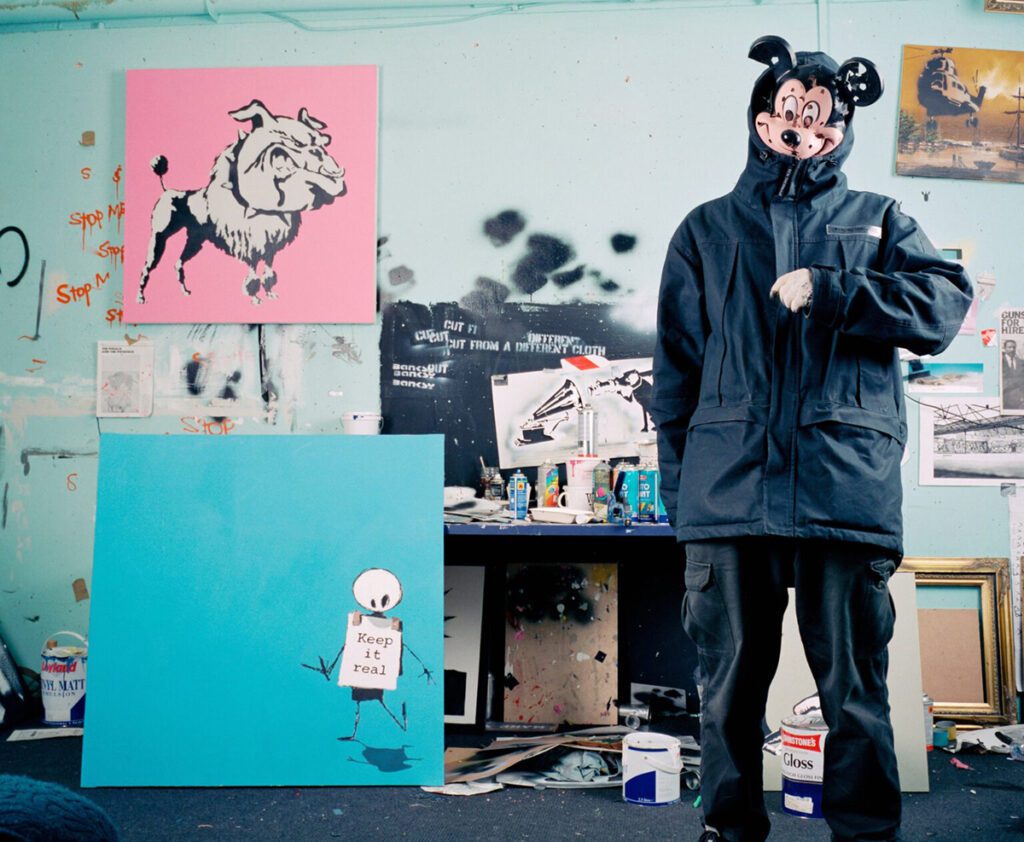
2. The Amber Room designed by Andreas Schluter
Russia once had an 18th-century room decadently decorated with wall-to-ceiling amber, called The Amber Room. This room held more than just one lump of amber on a pedestal. In fact, several tons of amber were mounted to the actual walls! The original room was a gift to Peter the Great celebrating peace between Russia and Prussia in 1716. The amber arrived in Russia in eighteen boxes. Later in 1755, the room moved to the Catherine Palace in Pushkin, Russia. The new larger location was filled with more amber and semi-precious stones. Someone even added gold leaf to the background!
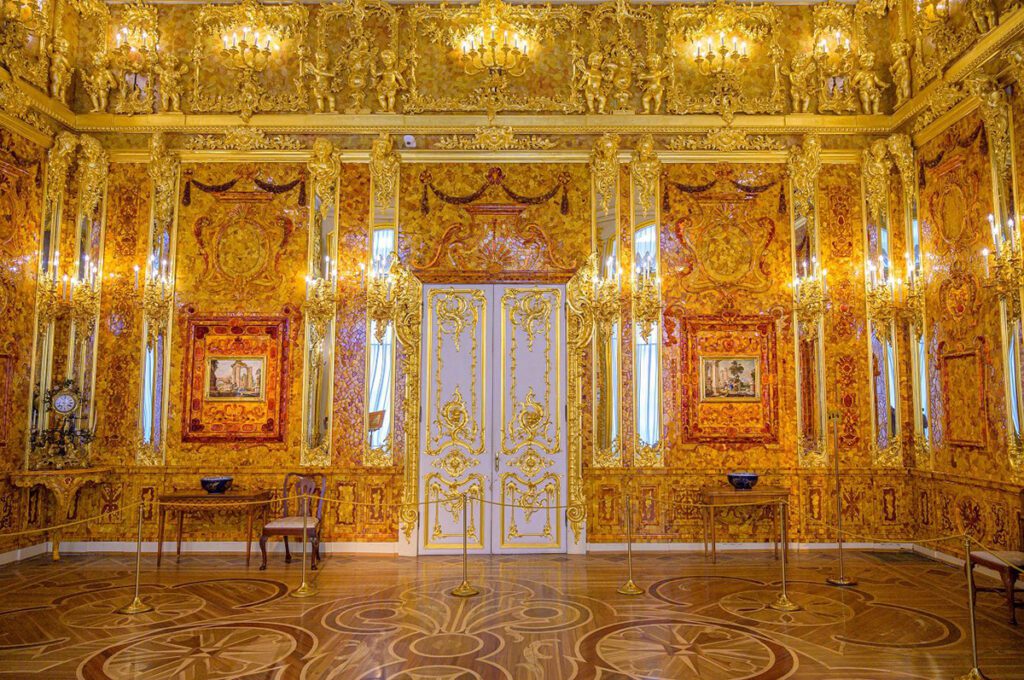
Enigma 1: Where did it go?
During World War II, the Nazis looted the room. Russian curators and officials tried to save and hide as much of the amber as they could, but some of the brittle amber crumbled. They put up wallpaper to trick the German soldiers, but the whole room was torn down within 36 hours, packed up in 27 crates, and shipped to Konigsberg, Germany. The Germans displayed the amber pieces for two years before Hitler ordered the room to ship out. The city was destroyed in bombing raids in 1944, including the Konigsberg Castle museum.
Enigma 2: Conspiracy Theories
The biggest mystery is where the amber went. Were the crates of amber destroyed in the bombings? Did the Amber Room make it out before the castle was destroyed? There are even more theories about where the precious amber is today. Go ahead and go on a goose hunt! Conspiracies run the gamut about what happened to this bounty of fossilized amber.
Stir up your students’ intrigue!
Challenge your students to dig into other conspiracy theories and present them to the class. Decorate a wall in your classroom in a decadent, faux amber-encrusted design. Alternatively, students weigh samples of amber and crunch the numbers to see how much a panel of the Amber Room would have weighed.
3. The Scream by Edvard Munch
Expressive paint strokes, vibrant colors, and one ghostly screaming figure summarize Edvard Munch’s famous portrait. Two elongated, ghastly figures walk toward the viewer on a boardwalk. The body of water carries an exciting current with two nautical vessels. The sky shows intense lines and warm colors. What exactly was Munch’s mindset when painting this iconic image in 1893? He wrote he was “… shaking with angst I felt the great scream in nature.” Munch created four versions of The Scream in different mediums including two tempera paintings and two drawings with pastel and crayon. Viewers around the world question why the artist depicted this four times.
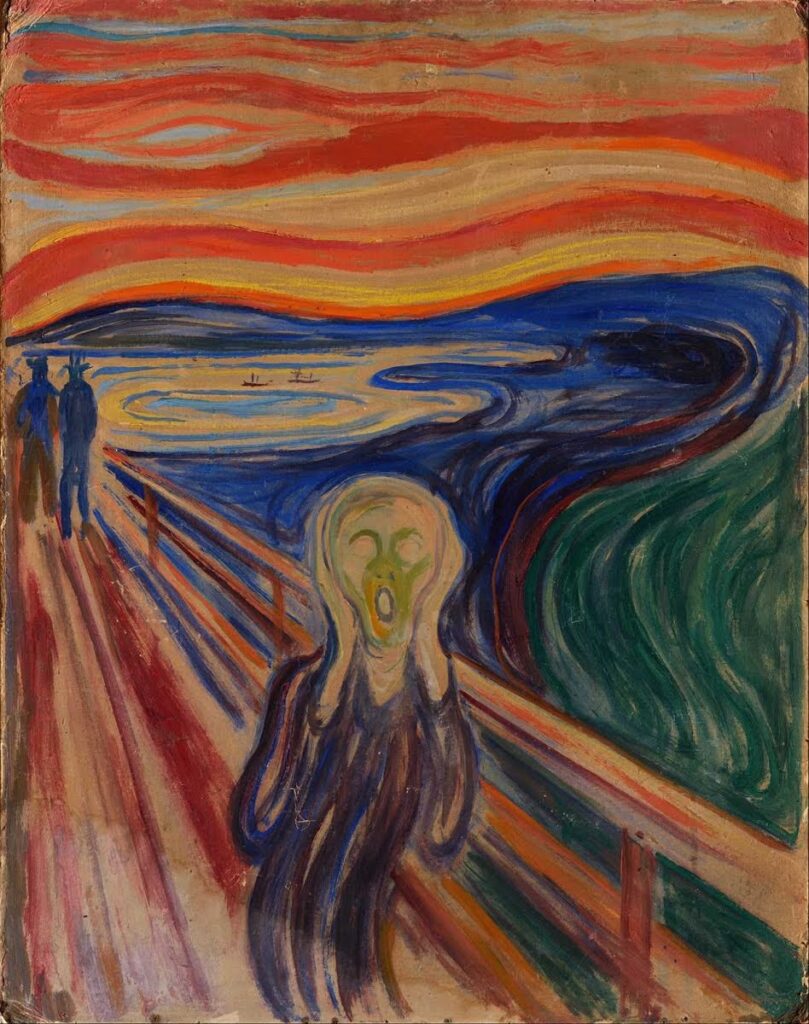
Learn more about Munch with FLEX Curriculum’s student-facing artist bios. This particular one includes an image of The Scream, a brief history, and an overview Munch’s career with cited sources. If you’re interested in getting handy artist bios for your students this year, fill out this quick contact form.
Secret 1: Mysterious Words Discovered
A mysterious phrase has recently been discovered in pencil at the top left corner of one of The Scream’s frames. The inscription in English reads, “Could only have been painted by a madman.” This opens the floodgates of mysteries! Did Munch or a passive-aggressive viewer write the quote?
Secret 2: Theft-Worthy
Stolen artworks eventually make the news and usually, further increase their fame. One version of The Scream was stolen for two years. Armed thieves tore it from the museum wall and threw it into a van in 2004. The painting was finally returned in 2006. Watch this video to learn more about the theft.
Stir up your students’ intrigue!
After investigating this artwork, ask your students if they believe this portrait still contains secret messages. Who do they think the two figures are in the background? Why was the weather and water in such turbulence?
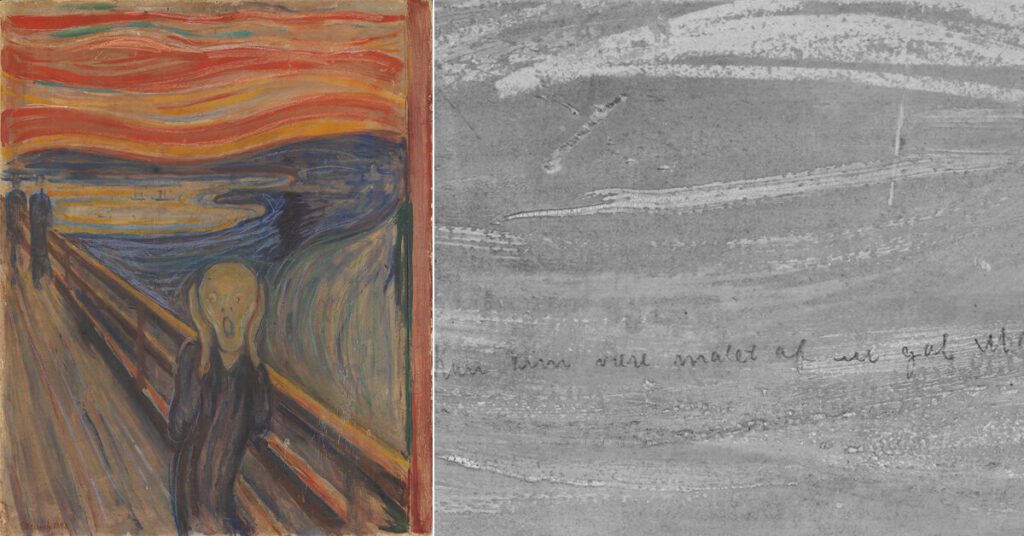
4. The Loretto Chapel Spiral Staircase
In the heart of Santa Fe, New Mexico’s historic district lies the Loretto Chapel. It’s just a few dollars to enter but the small church has an overwhelming mystery that lies within its walls. The mystery begins in the choir loft. When the building construction was completed in 1878, there was no access up to the 22-foot tall choir loft. Carpenters from all over were called to solve this problem. Many said only a ladder as a staircase would work—if they could fit one in!
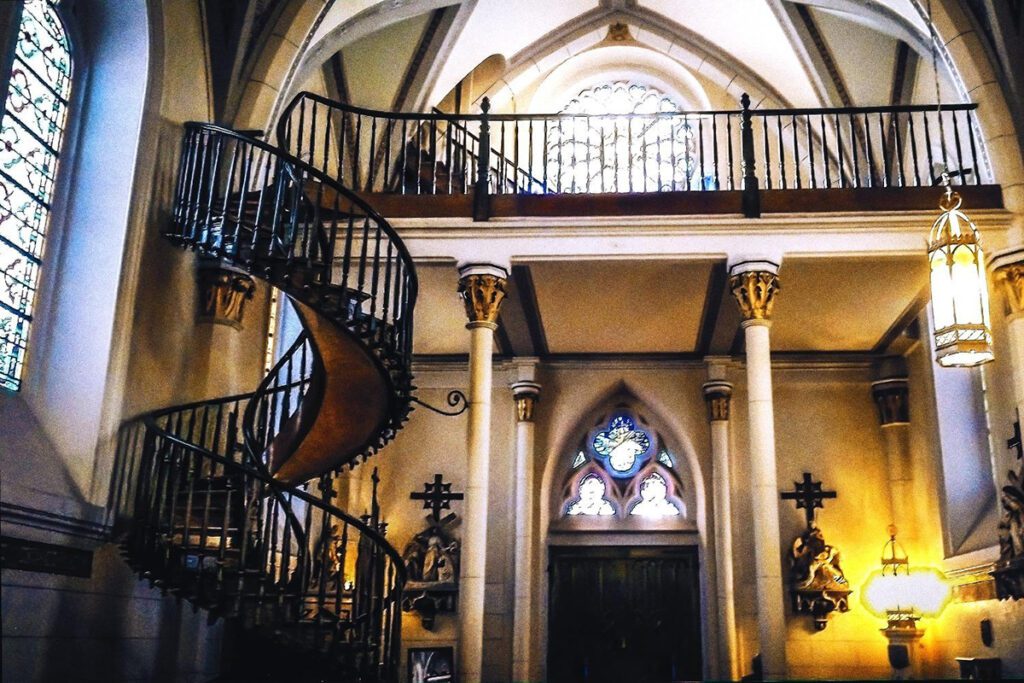
Mystery 1: The Anonymous Carpenter
The Sisters of the chapel prayed for nine days to the patron saint of carpenters, St. Joseph, to solve the issue. Legend says on the ninth day of their prayer, a man with a donkey and toolbox arrived at the chapel. A few months later, a circular staircase was erected and the anonymous carpenter vanished without payment. To this day, no one can pinpoint the man’s identity.
Mystery 2: The Craft of an Angel
The craftsman isn’t the only mystery behind the wooden staircase. The design is an incredible work of art! The entire staircase has zero nails and supports. It has two 360-degree turns and uses only wooden pegs to hold the structure together. Additionally, the type of wood used in the staircase is not native to New Mexico. People continue to wonder how an 1878 staircase was created using wood from another state!
Stir up your students’ intrigue!
Christian religion states Jesus was crucified at age 33. Many think it is no coincidence that this marvel uses the same number of stairs. Encourage your students to dig into other conspiracies out there. For an exit ticket, have students write down their questions. In the following class, take a few moments to do a little research together to try to uncover the answer.
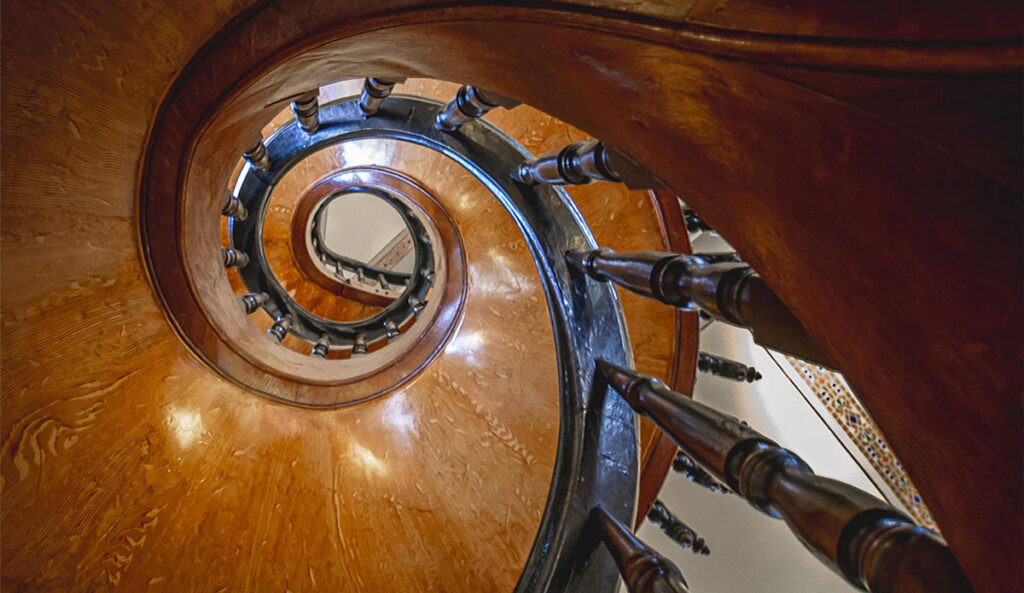
Becoming an Art Sleuth
There’s a reason why “unsolved mystery” shows are so popular—mysteries keep our brains engaged. Discuss unsolved art mysteries and invite open-ended questions to boost student engagement and inquiry. After reading about the anonymous graffiti artist, the hidden phrase, the disappearing gemstones, or the floating stairs, which mysterious artwork intrigued you?
For more mysterious and creepy artworks, check out these resources:
- How to Steal Students’ Attention with Art Heists and Forgeries
- Don’t Miss These 5 Eerie Artists and Their Unnerving Art!
- Eerie Artists for Spooky Season (Ep. 341)
What artwork with a super secret mysterious past have you introduced to your students?
How do mysteries spark student engagement in your studio?
Magazine articles and podcasts are opinions of professional education contributors and do not necessarily represent the position of the Art of Education University (AOEU) or its academic offerings. Contributors use terms in the way they are most often talked about in the scope of their educational experiences.





